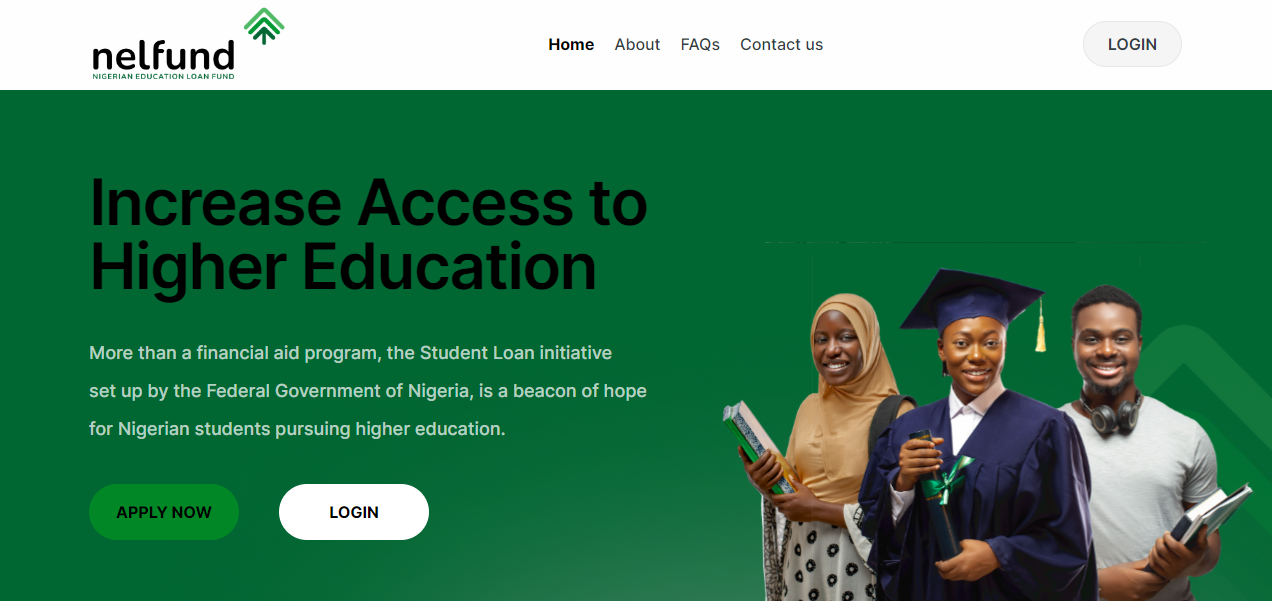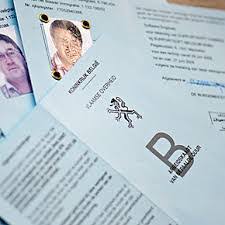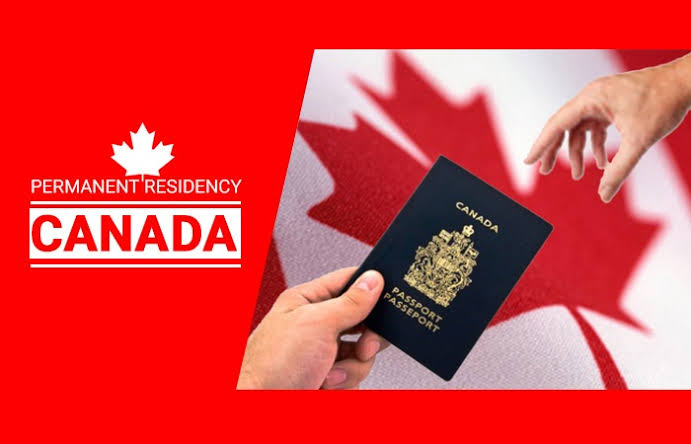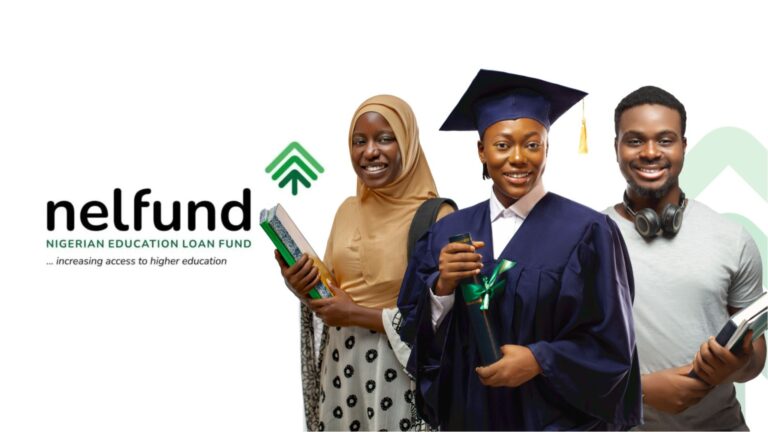The U.S. Visa Sponsorship is a popular destination for many international professionals and visitors due to the opportunities it offers to foreigners, securing a U.S. visa is not always easy due to the endless paperwork and other financial involvement. Hence many foreign nationals have resorted to seeking U.S.-sponsored visas. If you are among the foreigners who need a sponsored U.S. visa but don’t know how to go about it, then you need to go through this article on $100k U.S. Visa Sponsorship 2025/2026 to kickstart your journey.
However, it is worth noting that securing a U.S. visa-sponsored Application is not always a child’s play due to stiff competition from applicants. So, before you can start your visa application, it is always best to understand the U.S. visa requirements, their types, know sectors that often offer sponsored visa opportunities for foreigners, the visa application process, etc. in order to increase your chances of getting U.S. visa sponsorship for yourself.
Meanwhile, in order to increase your chances of securing a U.S. visa sponsorship application, you should get the needed skills, expertise, qualifications, and certification in your area of specialisation, especially if you are going for specialised roles. Amazingly, there are many popular sectors in the U.S. like tech, finance, agriculture, engineering, etc., that are willing to offer sponsored visas to exceptional international professionals who are ready to relocate and work in the U.S. For more information on how to apply and secure a $100,000 US visa sponsorship opportunity, keep scrolling!
Requirements for U.S. Visa Sponsorship Application
To qualify and apply for U.S. visa-sponsored opportunities, there are certain eligibility criteria that you are expected to meet. The eligibility criteria are discussed thus:
1. Educational Qualifications
Although not applied to all visa types, there are visa applications that require you to have a bachelor’s degree before you can apply for them. For instance, to apply for H-1B, EB-2, and some L-1 visas, you are expected to have a bachelor’s degree in your area of specialisation. The EB-2 visas even require advanced degrees like a master’s, PhD or exceptional ability in your field. Additionally, if you are applying for sponsored visas in tech and healthcare roles, Master’s in Computer Science and MD certification, respectively, will be an added advantage.
2. Work Experience
Another requirement that is highly considered for visa-sponsored opportunities in the U.S. is work experience. Most U.S. employers expect foreign nationals who need sponsored visas to have at least 3-5 years of working experience in their field, especially for those who are applying for senior or specialised roles. In fact, to get an L-1 sponsored visa, you are required to have worked with the sponsoring company’s foreign office for at least one year.
3. Skills and Certifications
This is one of the major requirements for most visa-sponsored opportunities in the U.S., especially for specialised roles that need expertise. If you want to apply for sponsored visas
In tech roles, you are expected to be proficient in programming languages like Python, Java, and C++, with relevant certifications like AWS Certified Solutions Architect or Google Professional Cloud Architect. For healthcare roles, you are required to have relevant licenses and certifications (e.g., RN for nurses, board certification for doctors). Meanwhile, if you want to apply for engineering roles in the U.S. that come with sponsored visas, you are expected to have necessary certifications, such as Project Management Professional (PMP) or Professional Engineer (PE), and for finance visa-sponsored roles, you are expected to have licenses or certifications like CFA (Chartered Financial Analyst) or CPA (Certified Public Accountant).
4. Language Proficiency
If you are conversant with visa processes, you may have heard of language proficiency certificates, like TOEFL or IELTS. Some sponsored visa roles in the U.S. require you to have good communication skills and be fluent in both written and spoken English. If you are applying for visa-sponsored roles in healthcare, academia, and client-facing positions, having a language proficiency certificate will boost your chances of getting the visa, even if it is not mandatory in the job description.
5. Specialised Knowledge or Extraordinary Ability
As you may have known, some U.S. visa types are only designed for foreign nationals with specialised knowledge or extraordinary ability. As a matter of fact, to get U.S. O-1 visas, you must demonstrate extraordinary ability through your publications, awards, or significant contributions to your area of speciality, while for an EB-2 visa, you need to show outstanding achievements, which you can prove through extensive work experience, major awards, or unique contributions to your field.
Types of Visa Sponsorship
In order for us to understand the concept of U.S. visa sponsored application, we have dedicated this section to discuss different kinds of U.S. visas so that it will guide you whenever you want to apply for it. The US-sponsored visas have different requirements, and while some visas may lead to permanent residency, others are only for temporary use. Nevertheless, let’s take each of the U.S. visa types on after the other.
1. Employer Visa Sponsorship
This is one of the most common visas for international professionals who want to relocate and work in the U.S. What happens in an employer visa sponsorship is that a U.S.-based employer offers to hire a foreign worker and sponsor their visa for them to work legally in the United States. This kind of visa sponsorship usually involves the employer proving that they couldn’t find a qualified candidate within the country that can take up the job role. In addition, the employer visa sponsorship process may also require the employer to meet salary and job posting requirements to ensure fair competition in the job market within the US. There are different popular subtypes of visas under this category, which are:
- H-1B Visa: This is for skilled professionals in specialised fields, like health, tech, etc.
- L-1 Visa: This kind of employer visa-sponsored opportunity is for internal company transfers of employees with specialised knowledge or managerial roles.
- EB Visas (Employment-Based): If you want a permanent residency in the US, you can opt for this visa subtype; it is ideal for skilled professionals, researchers, and workers with extraordinary abilities.
2. Family-Sponsored Visa
This is the type of U.S.-sponsored visa that enables citizens or permanent residents to sponsor their family members, thereby allowing them to reunite and live together in the United States. In the family-sponsored visa, the sponsor is required to prove their relationship with the applicant and sometimes must also demonstrate financial stability to support their family member. Ordinarily, family-sponsored visas often include spouses, children, parents, and, in some cases, siblings. Some of the common family-sponsored visas include:
- IR Visas (Immediate Relative): For spouses, children, and parents of U.S. citizens.
- F Visas (Family Preference): For more distant family relationships like siblings, or for family members of green card holders.
3. Student Visa Sponsorship
Student visa sponsorship is for international students who want to pursue higher education in the U.S. In most cases, it is the U.S. universities or research institutions that sponsor this type of visa, helping students gain legal entry into the U.S. However, this type of visa normally requires foreign students to show their acceptance offer into a recognised U.S. institution and, at the same time, show financial support for their studies and living expenses. Meanwhile, the good thing about this type of visa is that the U.S. can offer pathways to enable you to transit into work visas After graduation, allowing you to stay and work in the country. Some of the key U.S student visa types are listed below:
- F-1 Visa: For students in academic programs at universities and colleges.
- M-1 Visa: For students enrolled in vocational or non-academic programs.
- J-1 Visa (Exchange Visitor Program): For those participating in specific exchange programs that might also include work training, teaching, or internships.
4. Investor or Business Visa Sponsorship
This is the type of U.S. visa sponsorship that allows foreign nationals who want to invest in a business, open a company, or contribute financially to the economy of the United States to enter the country. However, this type of visa usually has high financial requirements but it can help you get permanent residency in the U.S. or even citizenship. Meanwhile, before you can secure U.S. business visa sponsorship, you are expected to show your substantial investment plan, a viable business plan, and job creation potential. Common visas for investors or business owners in the U.S. are:
- E-2 Visa: For investors from countries with business agreements with the U.S. who are willing to make a substantial investment in a U.S. business.
- EB-5 Visa: It is a path to permanent residency for those investing at least $1 million (or $500,000 in targeted areas) and creating jobs for U.S. citizens.
5. Temporary Worker Visa Sponsorship-Work In U.S.
Temporary worker visas are designed for international workers who want to work in the United States for a limited time, often for specific projects or seasonal work. This kind of U.S. visa sponsorship is common in fields like agriculture, construction, and hospitality, where there is often a high demand for short-term foreign workers. What happens is that the sponsors of this kind of visa are mandated by the U.S. immigration body to ensure that the terms and conditions that they use to sponsor visa temporary foreign workers align with local labour laws. The popular temporary worker visas on our list are:
- H-2A Visa: For agricultural workers who’ll work temporarily.
- H-2B Visa: For seasonal or temporary non-agricultural international workers.
- O-1 Visa: For foreign professionals with extraordinary ability or achievement in fields like arts, sciences, education, or business.
6. Religious Worker Visa Sponsorship
This is the type of sponsored U.S. visa that allows members of recognised religious denominations like pastors, missionaries, etc. to relocate and to work in a religious institution in the U.S. In most cases, it is the religious institution in the U.S. that sponsors this type of visa and the sponsoring religious organisation must confirm the applicant’s role, qualifications, and commitment to serve the U.S. citizens when they arrive. This visa often allows the family members of the religious leaders to join the worker. The primary visa type here is the R-1 Visa, which is for foreign nationals employed as ministers or in religious vocations within the U.S.
7. Humanitarian Visa Sponsorship
This is another U.S. visa type on our list, and it is for foreign nationals who are fleeing persecution, natural disasters, or other crises from their home countries. This kind of visa is mostly sponsored by governments or international agencies with the sole aim of providing safety to foreigners in distress. This type of visa normally comes with special provisions, including pathways to permanent residency in certain cases. The common types of humanitarian visas include:
- Asylum: This is granted to those who can prove that they face persecution in their home country due to race, religion, nationality, political opinion, or social group.
- Refugee Status: This is similar to asylum but the difference is that this type of humanitarian visa is processed outside the U.S.
- U and T Visas: This is for victims of human trafficking (T visa) or other crimes (U visa).
8. Diplomatic Visa Sponsorship
Diplomatic visa sponsorships are reserved for diplomats, foreign government officials, and international organisation employees who want to work in the U.S. This type of visa is mostly sponsored by the U.S. government, and it normally provides essential privileges and immunities to the diplomat to enable them to carry out their activities smoothly and securely. Common diplomatic visa types are:
- A-1, A-2 Visas: This is for diplomats and foreign government officials.
- G Visas: This form of diplomatic visa is for representatives of international organisations, such as the United Nations.
9. Adoption Visa Sponsorship
This is the last U.S. visa type on our list. It allows U.S. citizens or permanent residents to bring adopted children from foreign countries into the United States. This type of sponsored visa is usually difficult to get because of the numerous documentations and legal requirements involved. To get this type of visa, you must meet the US legal requirements on adoption and the child’s home country’s adoption rule. Adoption visa types include:
- IR-3 or IR-4 Visas: This is for children adopted abroad or in the U.S. after being brought from another country.
- Hague Convention Visas: This type of adoption visa is for children adopted from countries that are part of the Hague Adoption Convention, which ensures ethical adoption practices.
Jobs with $100k Visa Sponsorship 2025/2026 in the U.S.
Different sectors in the U.S. have great potential for offering sponsored visa opportunities to interested foreigners in the coming years. However, to increase your chances of getting a sponsored visa opportunity, you will need to have experience and necessary certifications in your chosen career. Some of the major U.S. sectors that offer sponsored visas to international workers are:
- Technology sector: for skills like software engineers, AI specialists, data scientists, IT managers, etc. You can apply to tech companies like Google, Amazon, Microsoft, etc. It has an annual salary range of between $90,000 and $150,000.
- Healthcare sector: for registered nurses, physicians, medical scientists, healthcare managers, etc., you can apply to U.S. health institutions. Their annual salary range is between $80,000 and $200,000+.
- Engineering sector: for skills like mechanical engineers, civil engineers, aerospace engineers, biomedical engineers, etc., you can apply for U.S.-sponsored visas in the aerospace, mechanical, and civil engineering sectors. The salary range is between $85,000 and $150,000 annually
- Finance sectors: for financial analysts, accountants, risk managers, investment bankers, etc. You can apply for the visa in the U.S. financial sector. The annual earnings for those in this category in the U.S. range from $100,000 to $250,000 annually.
- Academic sector: for researchers, professors, lab technicians, biochemists, etc., you can apply for sponsored visas through U.S. universities and research institutions, especially if you are in the STEM field. Those in this field earn between $70,000 and $130,000 annually.
How to Apply for a $100k Visa Sponsorship in the U.S.
Applying for and securing visa sponsorship opportunities in the U.S. is not always easy because many foreigners are applying for the same opportunity at a time. As a sequel to that, we have designed this section to guide you on the best approach that you can take to apply and secure a sponsored visa opportunity in the US. The application process for visa-sponsored opportunities in the U.S. is outlined below:
1. Evaluate your skills and credentials
Since getting a $100,000 U.S. visa-sponsored opportunity may be difficult due to competition, it is important for you to evaluate your skills and credentials before you can even think of starting your visa application. What you should do is review your skills, experience, and qualifications and then look for roles that align with them. Ordinarily, the higher the demand for your skill set in the U.S., the more likely it is that you are going to secure a visa sponsorship.
2. Research for Potential U.S.-Based Employers
Now that you know your key strength, the next thing that you should do is to look for a U.S. employer who is offering sponsored visa opportunities for foreigners. You should look out for big tech firms in the U.S., like multinational corporations, healthcare institutions, etc., that are known for offering sponsored visa opportunities to foreigners. You can visit popular job boards to see different U.S. visa-sponsored opportunities that you can apply for.
3. Prepare your resume and portfolio
Design a resume that is up to U.S. standards. One thing that you should remember when preparing a resume is that you should know that your employer will only consider your application based on what is in your resume. Hence, it makes sense for you to include all your relevant experience, skills, and achievements in your resume because they will speak for you in your absence. If you don’t mind, you can contact your friends or family members in the U.S. who passed through the same process to guide you on how best to go about your resume.
4. Apply Directly to U.S. Company
Once you are done preparing your application and relevant documents, you can submit your application directly to the U.S. company that mentions visa sponsorship in their job descriptions. You should tailor your application to one job at a time to show how you are uniquely suited for the role. You can prepare different resumes and for various U.S. visa-sponsored opportunities at a time.
5. Prepare for Interviews
You may be invited for an interview if your visa application is accepted. If you get notification for an interview, you should prepare for both technical and behavioural interview questions. It didn’t stop there; you should also prepare to discuss your interest in the U.S. market and why you’re an asset to the company you want to work with.
6. Visa Sponsorship Process
If you pass the interview and receive a U.S. visa sponsorship offer, you should work with your employer’s HR team to understand the steps involved in filing for a visa petition, such as the H-1B or EB-2. However, it is important to note that the visa sponsorship process can be lengthy, so you may be required to wait for a period of time before starting your role in the U.S.
Conclusion
We have seen that it is possible to secure a $100,000 U.S. visa sponsorship Application in the U.S. However, it involves lots of rigorous processes. Nevertheless, if you have the needed expertise and qualifications, you can secure sponsored visas in tech, healthcare, finance, engineering sectors, etc. since there is a shortage of skilled workers for such roles, which has led to high demand for foreign professionals who can take up the roles in the U.S. You can increase your chances of securing a U.S.-sponsored visa by preparing a tailored resume that aligns with the employer’s job objective. Remember that you need to be persistent, even if your U.S. visa application is rejected.




